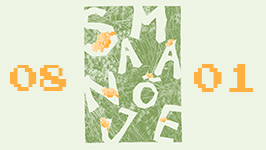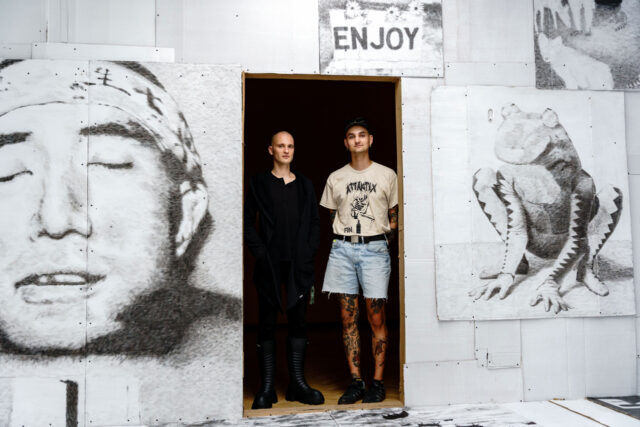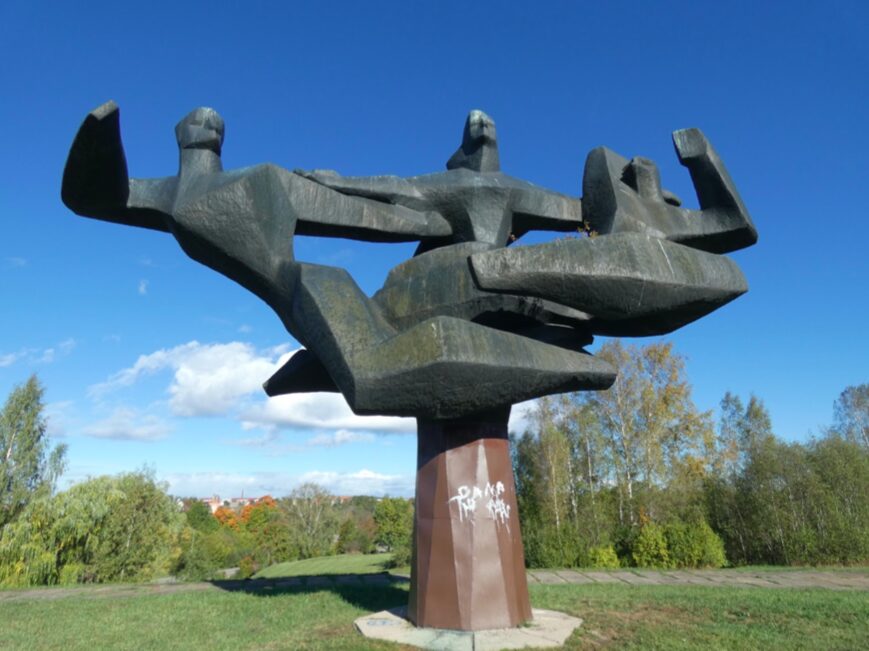
Exhibition ‘Image Drain’. Antonis Pittas. Hands On. Installation with carpeted sculpture, soft sculptures and slide projections. 2017. Photo: Karel Koplimets, Tallinn Art Hall
The international art biennial Tallinn Photomonth has been held since autumn 2011 as a self-initiative. This year’s Photomonth was held for the fourth time, and its main organisers were the artist Laura Toots and the project manager of the Estonian Contemporary Art Development Centre, Kadri Laas. The very diverse programme consisted of the main programme and a satellite programme, to which both local artists and artists with a wider international profile contributed. At the core of the biennial was the main exhibition ‘Image Drain’ (curator Anthea Buys [ZA/NO])[1], which took place in Tallinn Art Hall and the Museum of Photography. The title of the exhibition refers directly to ‘tiredness’ as a result of contemporary visual culture; while on the other hand, the question of trusting the curator emerged as an interesting topic. Buys created the whole story around fictional narratives based on real characters in history, the married couple Nadezhda and Osip Mandelstam. The action in this story took place in the near future: in 2018, the Mandelstams will establish an institution called the True Image Foundation, and a year later the Baltic Centre for the Contemporary Image, a museum and scientific research institute under its jurisdiction, will appear. In this case, ‘Image Drain’ was the first retrospective show by the True Image Foundation.[2] The whole story was presented as demonstratively goofy, and appeared as cancelled fiction, which did not try to persuade the visitor about its seriousness. Hence, one might say that Buys was interested in the three-way relationship between the real, the fictive, and the imaginary,[3] in the act of storytelling, and the relationship between art and the categories of real and fictitious. But it is her interest in the act of curating as such that intrigues me. In the exhibition, the perception of the curator which came to be known after the Second World War as a whole was questioned: ‘To me, it’s much more interesting to think that the curator is someone who you perhaps shouldn’t really trust. What happens to this whole system if you think that I might be lying to you when I tell you what the exhibition is about? I find this to be much more powerful, as it gives more power to the audience if they realise that they can’t trust the curator or the institution to tell them the truth.’[4] The curator is not some wonderful character who can explain works of art in extraordinary ways to the visitor; on the contrary, the whole curatorial approach appears like a ‘spectacle of possession and distribution of truth’.[5] Vesna Madžoski has emphasised how in the 1960s the role and meaning of the curator as a cultural agent changed in the artistic field; the anonymity of museum curators slowly faded away, introducing a new actor on the scene, who from then on would have authorship over the exhibition, a recognisable style, and also serve as a guarantee of quality; the curator was considered as an author in his own right. Referring to Foucault, she explains that without realising it, the art world had begun to host the ideological figure by which one marks the manner in which we ‘fear the proliferation of meaning’; the curator became the ‘the regulator of the fictive’, and hence the ‘protector of meaning’.[6] Given the fact that the Western art scene is governed by the curator-centred discourse, Buys’ approach could be viewed as an implied critique of the established discipline. As she did not prefer to control the grand narrative of the exhibition, her thematic setting manifests itself as a wish to question the widespread concept of a curator as such, and therefore escape from this predetermined role. Her goal can be seen as self-liberation from the obligation to create an artificial, controlling and reasoning narrative for selected artworks, and, on the other hand, as an act of reaching the empowerment of works of art, through which they can receive a certain degree of autonomy. As the traditional meaning of the curator as an exhibition communication expert is abandoned, the curator takes on a playful position, in which the goal appears to become unreliable. In addition, a seemingly explanatory text in the catalogue appeared to be a parody of a curatorial text as such; while the entire project appeared like a parody of exhibition making on the contemporary art scene. In spite of everything, a new (fictive) narrative was born. As the act of narration can be seen as a highly self-conscious act, the curator turned out to be like a co-author of the exhibition, and the curatorial work appeared as one art project among others.

Exhibition ‘Image Drain’ , In the foreground: Laura Kuusk. Cover. 360-degrees VR video loop. 2017. Photo: Karel Koplimets, Tallinn Art Hall

Exhibition ‘Image Drain”. Victoria Durnak. Only Love Can Break Your Heart. Movie, T-shirts, candle. 2017. Photo: Karel Koplimets, Tallinn Art Hall
Next to this, there were projects with very different starting points. For example, Victoria Durnak’s (NO) ‘Only Love Can Break Your Heart’ (2017), an installation of a T-shirt, a scented candle and a short film with Youtube-aesthetics, dealt with pathologies that spread in contemporary society, such as erotomania; involving the viewer in a certain voyeuristic way in heavily personal (yet imaginary) Umwelt. Or Laura Kuusk’s (EE) somewhat humorous 360-degree VR video ‘Cover’ (2017), which depicted dancers in three meaningful places for the artist, places which are associated with everyday decision-making and so-called ‘self-construction’ processes: in a construction store, an exhibition hall, and a commercial apartment currently for sale. The piece was catchy, contributing to the contrast with the usual situation where VR works are very high-tech and over-processed by technology; Kuusk’s video, on the other hand, was made in a kind of low-tech, home video style, depicting everyday reality. Thus, a certain irony was perceived towards the chosen media and its common methods of use. James Webb (ZA) also featured some remarkably refined sound works and space installations in both exhibition spaces. For example, he presented the project ‘Untitled (August 9th)’: small labels spread over a space that introduces an exhibition at the Nagasaki Atomic Bomb Museum, which stores material and commemorates events associated with 9 August 1945. Webb made copies of the tags, and presented them in the format of museum labels removed from the objects and images they are supposed to describe. It appeared like a semiotic game, in which the texts were separated from their original visual equivalents. Webb also entered into a dialogue with the Museum of Photography with his poetic work ‘A series of personal questions posed to a photograph marked “F. Freiberg. 1859”’ (2017), where he selected the oldest and most notable photograph in the museum’s collection, an ambrotype from 1859 that was damaged in the 1960s when the conservator rubbed alcohol on to it. The photograph became Webb’s research object, hence he created a sound piece that presents a series of questions to the photograph as a living entity. Such interest in local visual culture and history which frames this work can only be seen as a positive initiative. In general, the whole main exhibition created a rather interesting and mysterious atmosphere, dealing skilfully with the evolution and effects of digital technology, with different meanings of the contemporary image as such, and also with the aforementioned meaning and role of the curator. The selected title of the exhibition created a certain ripple through the whole biennial programme; and Kristina Õllek’s work ‘Distorted Hands’ presented at the exhibition became the main recurring motif of the visual identity of Photomonth.
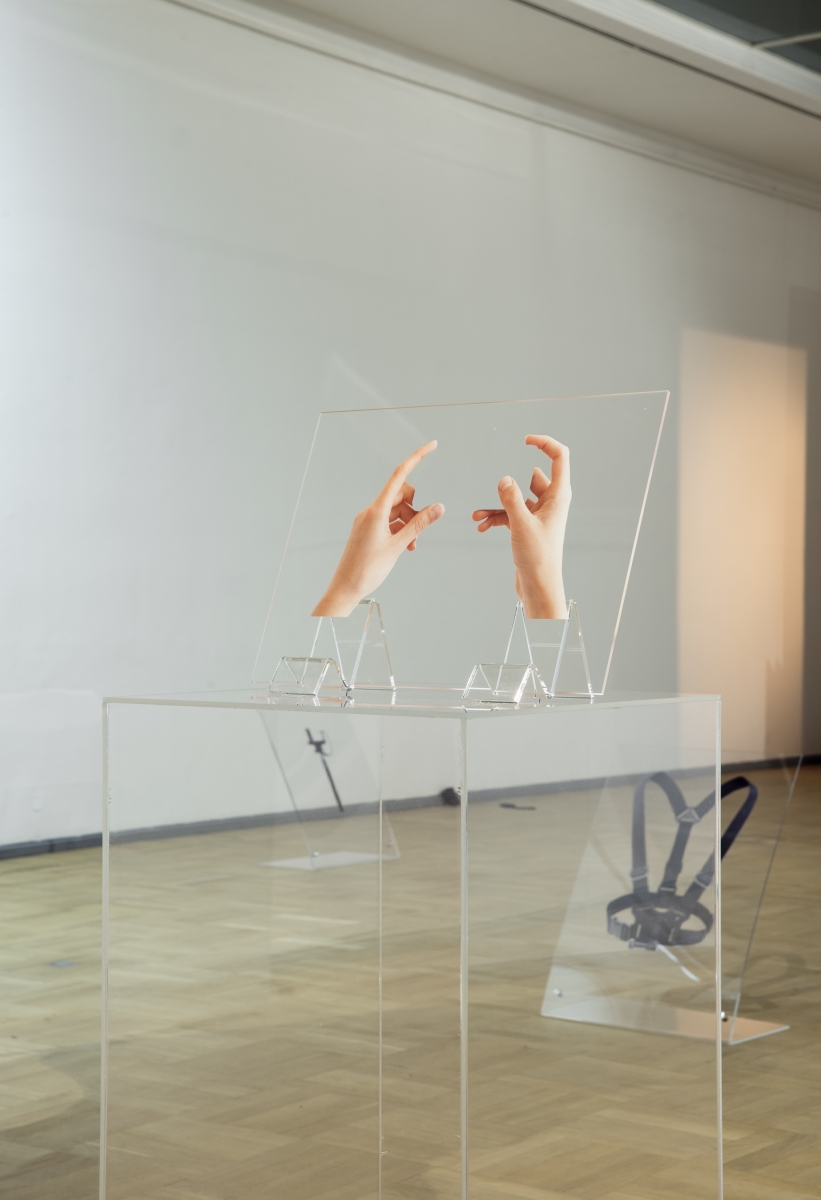
Exhibition ‘Image Drain’. Kristina Õllek. Distorted Hands. Installation, plexiglass, UV print. 2017. Photo: Karel Koplimets, Tallinn Art Hall
The other group exhibition ‘Fold by Fold the Widowed Stone Unrobes Itself’ (curator Stefanie Hessler [DE])[7] was shown at EKKM. The conceptual framework of the exhibition was surprisingly similar to the position of the curator of the main exhibition, having a playful effect and cutting off a specific narrative, which would somehow explain selected artists’ creative performances: ‘Fold by Fold the Widowed Stone Unrobes Itself’ does not propose a definite narrative or argument to peruse. A system with its own logic, it comes into being in front of our eyes, caressing our ears, permeating our noses, affected by our touch. It invites us to insert ourselves into an ambiguous plot, to change it, to create it (…) The borders between reality and her deviant sister, call her fiction, virtuality, a scam, become increasingly blurred, indiscernible even.’[8] The audience’s call for participation is probably the only major difference from the main show, otherwise the similarity of the curative positions seems to refer to a certain disappearance of faith in so-called ‘true’ narratives, which is expressed through a total, demonstrative and somewhat mysterious cancellation of all narratives. Is it happening similar to a social situation because of world politics? Has the distrust of a definite ground finally also arrived at exhibition-making practices? The whole exhibition was like a journey of discovery, offering a number of surprising moments. Works of art were able to manipulate the museum’s habitual space and the visitor’s perception of it. A memorable work was Triin Tamm’s ‘Total Eclipse’ (2017), which took the form of a blind tour in the museum premises; involving the visitor directly, it had a fresh and immediate effect. The tour was accompanied by a fictional vibe as the guide performed a compelling story, which was put together from fragments from Annie Dillard’s ‘The Abundance: Narrative Essays Old and New’ (2016) (an author who just happened to won the Pulitzer Prize in 1975 for ‘general non-fiction’). An uncanny effect was also achieved by David Kasprzak’s works, for example, a fictitious room portal that displayed an enigmatic flashing LED light (‘We Arrived From Here, But it Appears We Will Not Return in the Same Manner’, 2017), or the installation consisting of a steam generator and condensed human breath: ‘William Bleile’s Last Words’ (2017), which again acted as interceptions in the ‘normal state’ of the museum space.

‘Fold by Fold the Widowed Stone Unrobes Itself’ curated by Stefanie Hessler. EKKM, 2017. Photo: Paul Kuimet.
At the ARS exhibition ‘Light Similar to the Light 2’ by Kirke Kangro (EE) and Jacob Jessen (DK), the artists had set the goal of creating a shift within the exhibition space. Through elaborate aesthetic solutions, fluorescent tubes from the main room were displaced from their usual location to the adjoining room. At first glance, this simple gesture directed the flow of thoughts towards a certain meta-level institutional critique which is taking place outside the context of the traditional exhibition space. In addition, a dialogue between natural light and artificial light was created: viewers’ attention was drawn to the imitating artificial light as a separate phenomenon. Large curtain-like installations of artificial material in the centre of the exhibition appeared like excerpts from a construction store’s colour brochure, and played skilfully with light and shade. A great emphasis was placed on creating a spectacle for human visual perception; moreover, artists were able to change the habitual perception of the chosen space, creating a new world of light(s).
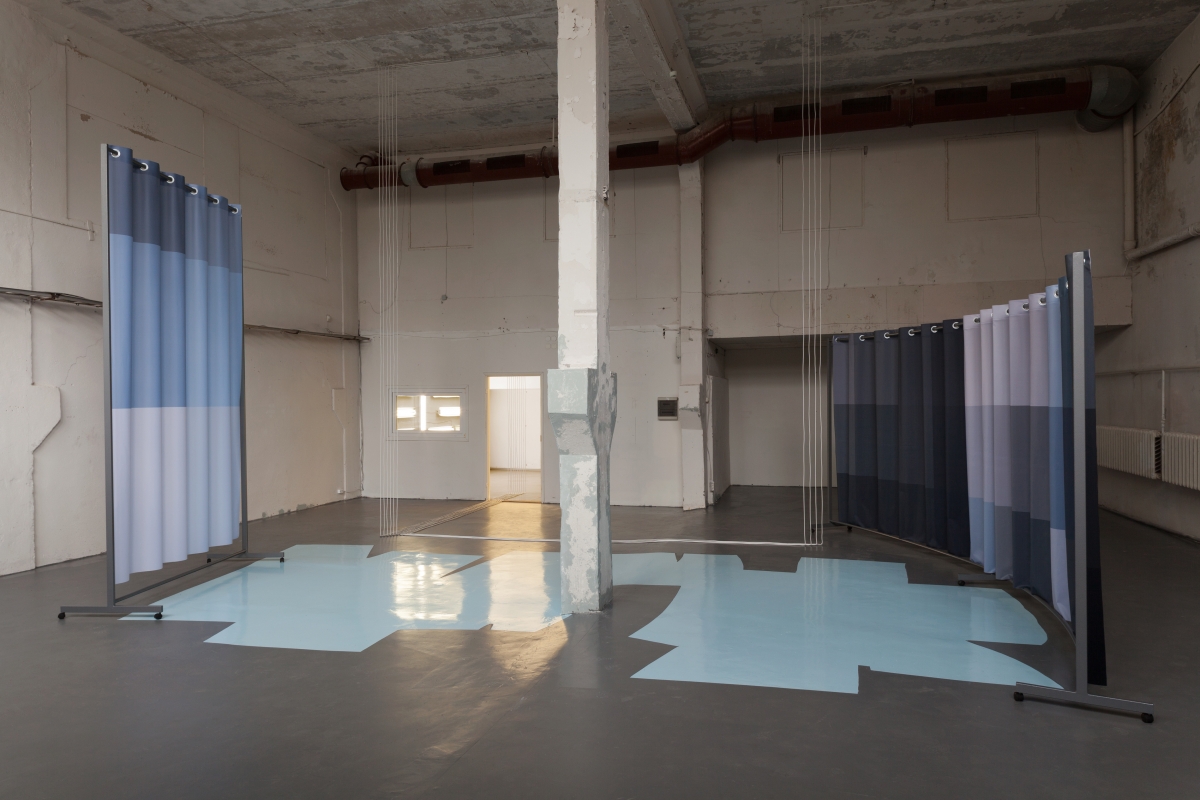
Kirke Kangro and Jacob Jessen ‘Light Similar to the Light 2’.
ARS Project Space
Photo: Paul Kuimet.

Kirke Kangro and Jacob Jessen ‘Light Similar to the Light 2’. ARS Project Space, 2017. Photo: Paul Kuimet
Attention was also drawn to Kristina Õllek’s (EE) and Kert Viiart’s (EE) exhibition ‘You Know You’ve Become Part of the View’[9] at Hobusepea Gallery. The artists were interested in the state of modern society and visual culture, which are constantly affected by the development of digital technologies. They studied materiality in the so-called immaterial era: there were images of natural motifs (such as rocks and water) that found their form in sculptures with contemporary visual language. This was accompanied by the video engaging with Ancient Greek culture, tourism, souvenir industries, the relationship between the original and a copy, and with the human’s craving for the original (‘The Real Thing’), which appeared to be in a paradoxical relationship with the success story of copies in the contemporary cultural space. ‘The real thing’ inserted into the Google search engine resulted in a variety of e-shop products, leading to a critical tone towards the contemporary neoliberal habits. The use and depiction of synthetic materials, strange imitations and the 3D simulation of the Acropolis brought to mind Baudrillard’s simulacra and special types of artificial realities; while the whole exhibition remained true to post-Internet aesthetics.
The exhibition ‘Sewage observation tower in baroque purple’ by Gallery Mihhail (EE) was also clearly distinguished in the programme. The experimental travelling gallery was launched in the spring of 2016 in Tallinn, and explores the format of art exhibitions and motifs of collectivity. By using unconventional places such as exhibition sites, it usually appears as an apartment exhibition, offering artists the opportunity to exhibit art in a different environment, while investigating the meanings of intimate and public spaces. The last exhibition was held in a luxury apartment building designed by Salto Architects near the Pirita River valley. This high-quality luxury modernist-style apartment was for sale on the real estate market, and created a rather impressive context for the works presented. It gave the exhibition a strong conceptual framework: with a sharp contrast between the underfunded art world and the elite lifestyle of property developers. In contrast to the spatial context, the exhibition itself engaged with mundane aspects of everyday life; site specificity and the uniqueness of the visual language appeared to be significant. The exhibition collective also participated with a fictional authorial position, Spencer M.A., dealing with the surveillance society, representations of state power, and the architectural language related to it, taking the (almost Orwellian sounding) ‘Superministry’ building, which has been discussed lately in the Estonian media, as their point of departure.

Adrian Paci, Column, 2016.
I would also like to emphasise the film programme ‘Imagining Places’, curated by Ingel Vaikla (EE), which was a highly positive experience. It was an exciting selection of films curated in three parts: ‘Archisculpture’, ‘(Be)longing’ and ‘Collective Memory of Cities’. The curator deals mainly in her work with the relationship between architecture and its user, and the representation of architecture in camera-based media, and this trend was also reflected in the selection of films. The programme involved the exploration of sculptural architecture (Das Haus, Aglaia Konrad), the poetic relationship between human and industrial architecture (River Plate, Josef Dabernig), the human potential as an object, such as an element of interior design (Stasis, Ruben Bellinkx), the study of various political and social regimes (Intervista, Anri Sala), and the interrelationship between East and West cultural spaces (The Column, Adrian Paci). One of the most memorable works in Photomonth, The Column (2016) by Adrian Paci, was also exhibited at a compelling exhibition “The Travellers” (curated by Magdalena Moskalewicz, at Kumu), which focused primarily on the effects and consequences of colonialism in the context of Central and Eastern Europe. With its enchanting camera work the film presented the story of Chinese workers who produce an antique marble column on their way to Europe. As the column was commissioned by the artist himself, this bizarre scenic gesture reflects convincingly the state of modern neo-liberal economic system; while demonstrating how today one of the most important characteristics of Europe, Antique culture, can be, if necessary, exported from the East. With the concept of creating the column in a high-quality handicraft, the artist ironically returns to the common understanding, where the so-called valuable objects are produced by the Western economy in contrast with the cheap copies of China; while trying to reverse the wider habitual colonial power relations.
An important partner of Photomonth was once again the Estonian Photographic Art Fair, which started in 2010 and is still the only art fair in Estonia. The purpose of the fair is to introduce audiences to the innovative work of Estonian and foreign photography artists, and to share information about the possibilities for collecting photographic art. This year’s fair featured 38 artists, five galleries, and five project spaces. The fair was a good display which could, in my opinion, be considered a completely independent art exhibition. Each year, it increasingly acquires the attributes of an art exhibition, while becoming more and more professionally produced and thought through. As an emerging trend, one could notice that the photographs were ‘stepping’ into space, often presented in a light box, and thus becoming more sculptural. In general, the selection of artists and galleries was diverse, and appeared well based.[10] The fair was accompanied by an intriguing satellite that was largely aimed at freelance cultural workers (organised by the alternative learning initiative Graphic Design Project Space [EE], run by Ott Kagovere and Maria Muuk). For example, the film ‘KAMERA LÄUFT!’ (2004) by the German collective Kleines Postfordistisches Drama was shown, and an open discussion was held on a similar topic.
In summary, what were the values and interests of Photomonth, given the fact that the biennial inevitably leads to the creation of a new discourse? Within this discourse, a clear focus was put on the semiotic ambiguity of the contemporary image as a cultural agent. For example, the agency of the image was scrutinised: its ability to influence and manipulate human consciousness (such as ‘deceptive images’). Additionally, advertising, imagery, self-representation practices and the society of the spectacle emerged; while the study of the photograph as a medium, and its complicated relationship with the ‘visual truth’, became important. This aspect was also surrounded by repeated interest in fiction and non-fiction categories. It became clear that the interest in digital culture and its relationship with contemporary visual culture is still at the forefront. This study has led several artists once again to acknowledge the ‘supremacy’ of visualism in the mechanisms of modern society. The content of the entire programme constructed primarily a self-conscious and educated visitor who preferably has a prior knowledge of contemporary art. Taking into account the probable potential of Photomonth as a platform for popularising contemporary art in local society, we could perceive this aspect as a potential danger: possible closure within the boundaries of the hermetic discourse of contemporary art.
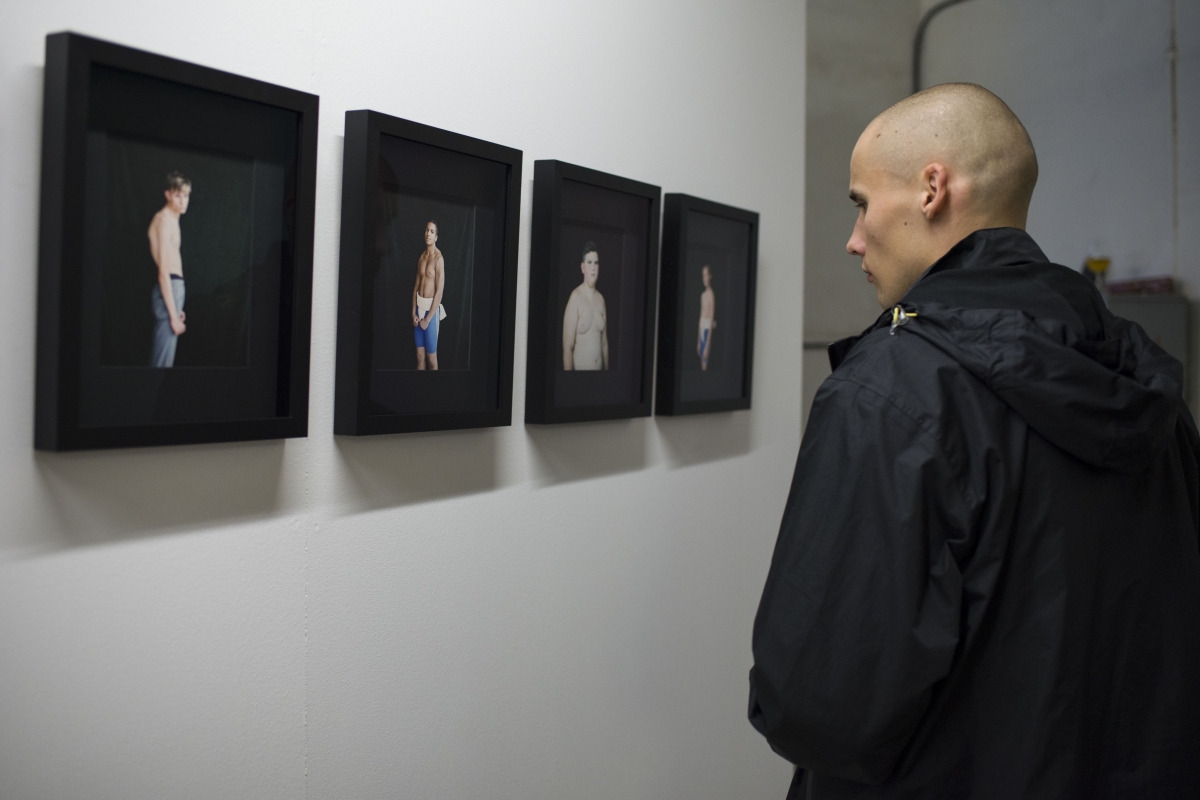
Opening of Estonian Photographic Art Fair Telliskivi Creative City. Photo: Mari Armei

Opening of Estonian Photographic Art Fair Telliskivi Creative City. Photo: Mari Armei
Strengths and weaknesses. Photomonth was able to provide a rather powerful intellectual debate; everything was thought out and professionally produced. It was also positive that the organising team wants to bring the contemporary art exhibition format into a different environment, and therefore experiments with various spaces that are not usually used as art exhibition venues. However, the ambition to step out of the usual spatial environment could be even stronger. There could have been various works in public spaces, which in turn would have fostered stronger contact with wider audiences and raised the visibility of the whole event (Marge Monko’s [EE] ‘Flawless, Seamless’ displayed at Freedom Square was the only work exhibited in a public space). Moreover, the main strength of Photomonth can also be seen as its weakness: namely, that everything was very professional and well-produced. But what happens next? Where are the so-called inconsistencies? We could say that, on a wider level, this sophistication and orientation towards the outcome appears simply as an adequate reflection of the current state of the local art scene, where the emphasis is still mainly on visual language and presentation, thus being endangered by over-polishing and aestheticisation. Still, it is important to mention that the Photomonth programme did not fall into this trap completely. For example, this mode of practices was eminently intervened by two projects: ‘Platform’ by the self-initiative Neanderthal Cave School (EE) at EKKM, and ‘Failure/Afterlife’ curated by Annika Toots (EE) and Merilin Talumaa (EE) (in various places). The first focused on process-based open art practices, and established an exhibition residency, where the entire space was constantly open for visitors to collaborate with the artist group. The latter, offering open studio visits, conversations with artists and creating an exhibition/sale, demystified the process of creating art and ‘auraticism’ that often surrounds it.
Tallinn Photomonth as an institution. It would be relevant to pose the question: what function does Photomonth eventually carry, and how does it fit into the wider international context? Even though it was originally created primarily to develop cooperation between artists and to be more visible,[11] or to discuss the position of photographic art in the context of the artistic field, in time it has acquired a broader meaning, and has become, in the first place, a platform for popularising local contemporary art both locally and internationally. It is important to note that Photomonth has become, in its communication over the years, more and more a ‘contemporary art biennial’,[12] an aspect which has recently also been discussed by the Estonian art critic Andreas Trossek.[13] Thus, Photomonth has consciously acquired a wider grasp and introduced the name ‘biennial’, which acts as an umbrella term for a very diverse programme, while also having more contemporary effect in the context of the international arena. Namely, because a biennial is essentially a medium with global ambition, this can be seen as a claim to take a firmer position in the global discourse of contemporary art. Therefore, this act allows it to participate in ‘producing the contemporary’, as Cuauhtémoc Medina would formulate.[14] Most critics agree that biennials today have a dual purpose: both highlighting the uniqueness of the particular place and its culture, as a way of cultivating a national audience and attracting an international one; and bringing international artists to the local situation, cultivating national citizens as international consumers and connoisseurs of culture. The lure of the local meets the glamour of the global.[15] A biennial helps to place a city, a region, or a specific art field ‘on the map’, and will inevitably include an attempt to collect so-called symbolic, but also real economic capital for the local art scene. So, one must be aware and not deny Photomonth’s by-default functions: promoting the internationalisation of local art production and its modification to international markets. However, these cannot be considered as the only functions. So, like Simon Sheikh, I would ask: if biennials are inevitably active in collecting symbolic and real capital, can they do something else at the same time? Can they produce something other than merely more symbolic-turned-real capital for the cultural producers, curators and artists involved, something else in terms of interconnected global political transaction and translation?[16] I believe it is especially important for Photomonth’s organisers to create high-quality content, that is, to contribute to the local cultural scene. A biennial can be seen as a critical experimental platform that encourages cross-border cooperation and reflection, and I think the biennial format has the potential to transform the collective imagination of the world we live in. From this perspective, Tallinn Photomonth has been able to enrich our cultural space. It challenges the mainstream cultural and political narratives by which contemporary visual culture is understood. However, it is important to remain vigilant, and to see the critical boundary between courageous cultural contributions and the desire to raise symbolic capital. As Sheikh argues: ‘While biennials remain spaces of capital, they are also spaces of hope.’[17]

Kadri Adrikorn ‘Domestic Domain: pH Lab‘, 2017. Eva Mustonen ‚Kitchen Blues‘ 2017. Gallery Mihhail. Photo: Roman-Sten Tõnissoo

‘Failure / Afterlife’ curated by Annika Toots and Merilin Talumaa. Visit to the studio of Anna Mari Liivrand & Kristin Reiman. ARS building, 2017. Photo: Kulla Laas

‘Failure / Afterlife’ curated by Annika Toots and Merilin Talumaa. Visit to the studio of Anna Mari Liivrand & Kristin Reiman. ARS building, 2017. Photo: Kulla Laas

‘Failure / Afterlife’ curated by Annika Toots and Merilin Talumaa. Visit to the studio of Anna Mari Liivrand & Kristin Reiman. ARS building, 2017. Photo: Kulla Laas
[1] The participating artists were: Andrew Amorim (BR/NO), Victoria Durnak (NO), Mathijs van Geest (NL/NO), Carl Johan Högberg (NL/SE), Henri Hütt (EE), Toril Johannessen (NO), Paul Kuimet (EE), Laura Kuusk (EE), Antonis Pittas (GR/NL), Mårten Spångberg (SE), André Tehrani (NO), James Webb (ZA), Kristina Õllek (EE).
[2] Dina Danowitz. Kõige tõe(li)sem kujutis. – Müürileht. September 2017, p. 27.
The curator recalled a book ‘Manna for the Mandelstams, for the Mandelas’ (2000) by a French feminist writer Héléne Cixous, which is about Osip and Nadezhda Mandelstam and Nelson and Winnie Mandela. Buys found it interesting how the book turned well-known political icons, in the case of the Mandelas, and political and literary figures, the Mandelstams, into fictional characters. (Loore Sundja, Else Lagerspetz. About ‘Image Drain’. Interview with Anthea Buys. Kunst.ee magazine, 2017/3, p. 21).
[3] Three such categories are established by Wolfgang Iser in the book The Fictive and the Imaginary. Charting Literary Anthropology (1993), when discussing the fictionalising act.
[4] Anthea Buys. – Loore Sundja, Else Lagerspetz. About ‘Image Drain’. Interview with Anthea Buys. Kunst.ee magazine, 2017/3, pp. 23.
[5] Anthea Buys. The title is ‘Image Drain’. – Image Drain catalogue. Tallinn Art Hall, 2017.
[6] Vesna Madžoski. The Invention of Curators. – Archives and Disobedience. Changing Tactics of Visual Culture in Eastern Europe. Ed. Margaret Tali, Tanel Rander. Estonian Academy of Arts Press, 2016, p. 81.
[7] The participating artists were: Gintaras Didžiapetris (LT), David Kasprzak (US), Karl Larsson (SE), Gabriel Sierra (CO), Triin Tamm (EE), Kristina Õllek (EE).
[8] Stefanie Hessler. Fold by Fold the Widowed Stone Unrobes Itself. – Photomonth’s main catalogue. Tallinn Photomonth, 2017, p. 9.
[9] The exhibition was a follow-up to the ‘When You Have the Object Itself in Front of Your Eyes’ (Õllek) and to their cooperation ‘Exhibit onscroll’, which dealt with image representation and dematerialisation issues. (Press release of ‘You Know You’ve Become Part of the View’.)
[10] It is important to mention that for the first time, this year’s fair cooperated with the private institution of art funding in Estonia – Outset Estonia, who invited the international jury to select the best works for public art collections. The jury consisted of Shoair Mavlian (Tate Modern), Thomas Seelig (Photomuseum Winterthur), Anu Allas (Kumu Art Museum) and Karin Laansoo (ECADC / Outset Estonia). The jury’s favourites were Kristina Õllek (EE) and Diana Tamane (LV). The works of these artists will be bought in different collections of public museums.
[11] Kristel Raesaar. Notes on Tallinn Photomonth. – Photomonth’s main catalogue. Tallinn Photomonth, 2017. p. 28.
[12] The biennial format was accepted already after the 2011 festival, but then such self-determination was not so strong and visible.
[13] ‘When in 2011 the first Tallinn Photomonth was held under the European Capital of Culture programme, it was still defined as a ‘Camera Art Festival’. In 2013, ‘the camera-based arts and visual culture’ was discussed more widely, and in 2015, Photomonth’s self-determination became the ‘international art biennial’.’ Andreas Trossek. Fotokuu – festivalist kunstibiennaaliks. Postimees, September 2017. https://kultuur.postimees.ee/4258619/fotokuu-festivalist-kunstibiennaaliks
[14] Cuauhtémoc Medina. Contemp(t)orary: Eleven Theses. E-flux. January, 2010. http://www.e-flux.com/journal/12/61335/contemp-t-orary-eleven-theses/
[15] Simon Sheikh. Marks of Distinction, Vectors of Possibility: Questions for the Biennial. – The Biennial Reader: [an anthology on large-scale perennial exhibitions of contemporary art]. Ed. Elena Filipovic, Marieke van Hal, Solveig Øvstebø, 2010, p. 157.
[16] Simon Sheikh. Marks of Distinction, Vectors of Possibility: Questions for the Biennial, p. 163.
[17] Ibid.




